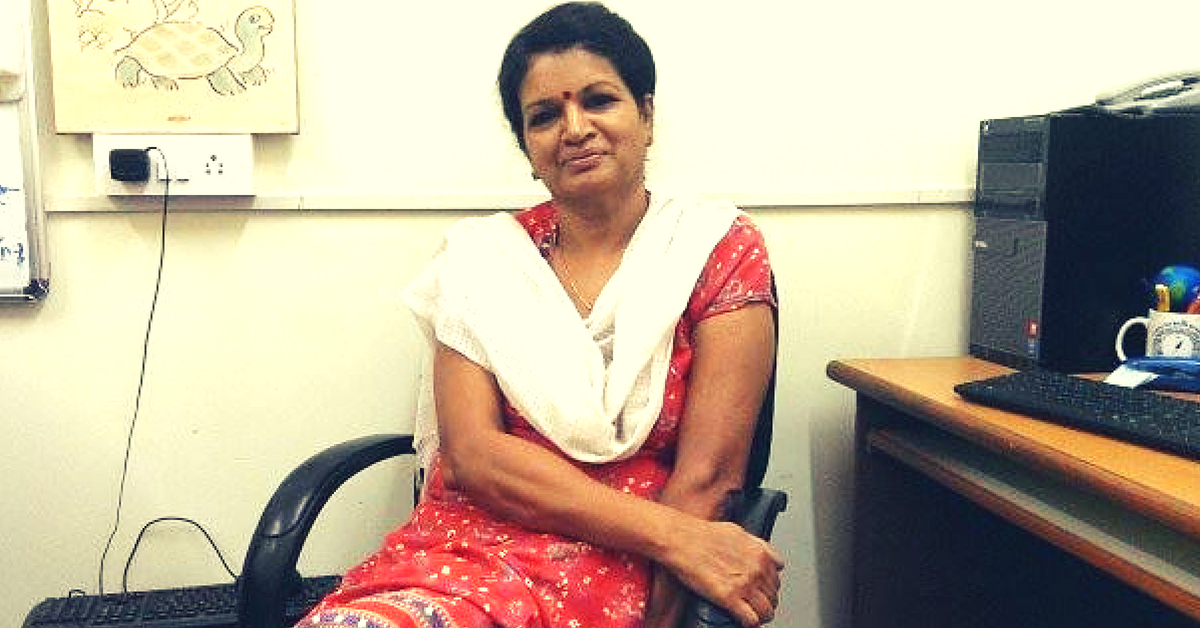This Brilliant IISc Seismologist Just Won India’s 1st ‘National Award for Woman Scientist’!
Kusala Rajendran is an outstanding earth scientist and seismologist who was honoured with India’s first ever ‘National Award for Woman Scientist’ for Ocean Sciences and Technology and Atmospheric Sciences Technology last month.

From their history, cause, origin and repercussions – most things we know about earthquakes in India can be credited to the extensive repertoire of Kusala Rajendran’s work.
Don’t know who this exceptional woman is? Here are some things about her.

Kusala Rajendran is an outstanding earth scientist and seismologist who was honoured with India’s first ever ‘National Award for Woman Scientist’ for Ocean Sciences and Technology and Atmospheric Sciences Technology last month.
Even though she was born in a conservative family, where most women were expected to get married after their Bachelor’s degree, Kusala was encouraged to pursue her career in a field where she was the only woman back in the day.
And so it comes as no surprise that the renowned seismologist dedicated her award to women across the country who achieve their goals, despite the odds.
She studied masters of technology in applied geophysics at the premier Indian Institute of Technology-Roorkee, which was considered India’s best in the field in the mid-1970s. In a class of only six students who took up geophysics, Kusala was the only woman.
A postgraduate of the 1979 batch, Rajendran recalls how gender discrepancy often led to isolation where most men had their own support groups. She couldn’t ask for help or guidance from any seniors. In an interview with The Print, she talks about the number of women who quit earth sciences because they were looked down upon when they travelled with men who weren’t their husbands.
It wasn’t until 1987 that Rajendran left for the United States to pursue a PhD in seismology from the University of South Carolina. After her return to India in 1993, she worked with the National Centre for Earth Science Studies until 2007 and later joined the esteemed Indian Institute of Science (IISc) as an Associate Professor, where she continues to work.
It was during her stint at the Centre for Earth Science Studies, Trivandrum, that Kusala first met her husband, renowned geologist, C P Rajendran. They worked on several projects before tying the knot.
One of her first collaborations with her husband was studying the deadly 1993 Latur earthquake which claimed thousands of lives. Ever since, the two have published several papers together and gained recognition around the world as the geologist-seismologist Rajendran duo.
If you were to skim through Kusala’s work, you’d know how she has been a part of studying every significant earthquake in India including the 1993 Killari earthquake, the 1999 Chamoli earthquake and the 2001 Bhuj earthquake.
While studying an earthquake, Rajendran’s team takes the first flight to the site. The time immediately after the earthquake is most important for seismologists. It is during this period that they can study the earth to get an idea of any previous such occurrences.
“Geologists dig a trench and study the walls, where they find layers of soil settled over each other through millennia. These layers can be dated and disturbances caused by historical earthquakes identified. Then, quake recurrence patterns are calculated, data that helps computer models forecast possible earthquakes in the area,” she told The Print.
Read more: What Links India’s Chandrayaan Missions to a TN Village? This Brilliant Scientist!
One outstanding instance in her career was that of the 2004 tsunami when the husband-wife duo travelled to Kaveripattinam in Tamil Nadu to study past tsunamis. Due to the lack of written records, they did not have any idea if there had been an earthquake there in the past.
But it struck them how Tamil poem Manimekalai spoke of an account where the sea had swallowed up the town. They dug a trench to find the deposit layer of ancient soil all the way from the ocean floor. They later found archaeological evidence of pottery in the same layer. The 2004 tsunami was dated back to a similar event 1,000 years ago.
In 1993, she was awarded the Krishnan Gold Medal by the Indian Geophysical Union for her work on geophysics. She also received the Tabor Award in 1992 from the Department of Geological Sciences, University of South Carolina, and on July 18, 2005, she was ranked among the top ten young researchers in the country by Outlook Magazine.
Kusala adds how research on seismology in India is now on par with international standards. But maintains that India needs to help its students focus on knowledge and learning, rather than acquiring mere grades; this will also aid the expansion of the field, she feels.
(Edited by Shruti Singhal)
Like this story? Or have something to share?
Write to us: [email protected]
Connect with us on Facebook and Twitter.
If you found our stories insightful, informative, or even just enjoyable, we invite you to consider making a voluntary payment to support the work we do at The Better India. Your contribution helps us continue producing quality content that educates, inspires, and drives positive change.
Choose one of the payment options below for your contribution-
By paying for the stories you value, you directly contribute to sustaining our efforts focused on making a difference in the world. Together, let’s ensure that impactful stories continue to be told and shared, enriching lives and communities alike.
Thank you for your support. Here are some frequently asked questions you might find helpful to know why you are contributing?


This story made me
-
97
-
121
-
89
-
167













